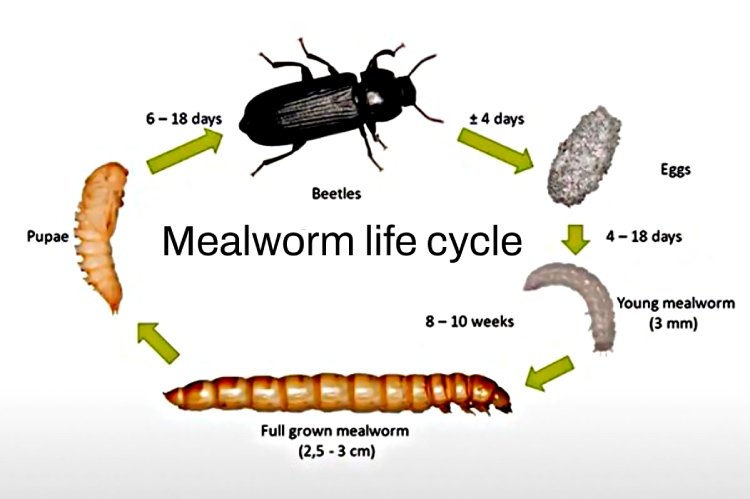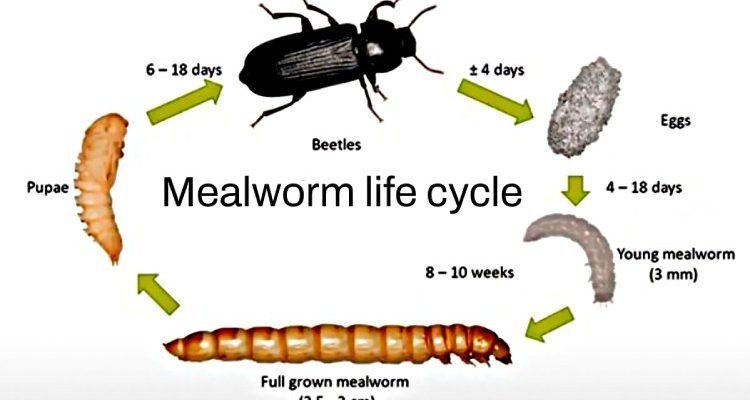
Mealworms are actually the larval stage of the mealworm beetle, also known as the darkling beetle. They’re not just a snack for birds or reptiles; they’re becoming more popular in the human diet, too. Imagine biting into a protein-packed snack that’s also sustainable! Let’s dive deeper into the world of mealworms and uncover why they deserve a spot on your radar.
What Exactly Are Mealworms?
Mealworms are the larvae of the beetle *Tenebrio molitor*, which belongs to a group called darkling beetles. These wriggly little guys can grow up to around 2.5 inches long and are typically a light brown or yellowish color. But don’t let their size fool you—mealworms are often found in surprising places. They thrive in dark, damp environments like soil or rotting wood.
You might be wondering what they eat. Mealworms are scavengers at heart, enjoying a diet rich in decaying vegetables and plants. This makes them quite handy for the ecosystem, as they help break down organic matter and recycle nutrients. Plus, they have a knack for converting waste into protein, making them an efficient food source!
Life Cycle of Mealworms
The life cycle of a mealworm is a fascinating journey, consisting of four main stages: egg, larva, pupa, and adult beetle.
1. Egg: A female darkling beetle can lay hundreds of tiny eggs, usually in dark places. They’re often barely visible to the naked eye.
2. Larva: This is where we meet the mealworm! The larval stage can last for several months, during which they munch on organic materials.
3. Pupa: After growing, mealworms will pupate, transforming into a resting state before emerging as adults. This stage can last for a week or two.
4. Adult Beetle: Finally, they become full-fledged darkling beetles, capable of reproducing and starting the cycle again.
Each stage is important and contributes to their role in the ecosystem. Isn’t it incredible how something so small plays a part in larger ecological processes?
Why Are Mealworms Important?
You might be surprised to learn that mealworms have some pretty significant roles in our world. Here are a few reasons why they matter:
– Sustainable Protein Source: With the global demand for protein on the rise, mealworms are an eco-friendly alternative to livestock farming. Breeding mealworms requires far less land, water, and food compared to traditional meat production.
– Waste Reduction: As natural recyclers, mealworms help break down food waste and other organic materials. They convert this waste into high-quality protein, reducing landfill burden.
– Animal Feed: They’re also a favored food for pets like reptiles and birds. Many farmers are incorporating them into diets for livestock as a protein boost.
In short, mealworms are small but mighty when it comes to sustainability!
How Are Mealworms Used in Human Food?
Mealworms are taking the culinary world by storm. As more people seek alternative protein sources, mealworms are being incorporated into snacks, baked goods, and even protein bars.
For those with a sense of adventure, you might find them seasoned and roasted, tasting a bit like nuts or seeds. They can also be ground into flour and used in baking, adding a nutritious twist to your favorite recipes. Honestly, the possibilities are endless!
Another exciting angle is how companies are experimenting with mealworms in pet food and animal feed. They offer a nutritious and sustainable option that supports healthy growth, especially in younger animals.
Are Mealworms Safe to Eat?
If you’re considering adding mealworms to your diet, the good news is they’re generally safe to eat! Here are a few things to keep in mind:
– Nutritional Value: Mealworms are rich in protein, fiber, and healthy fats. Plus, they’re packed with vitamins and minerals, making them a nutritious snack.
– Allergies: As with any new food, some people may experience allergies. If you’re sensitive to shellfish, approach mealworms with caution, as they belong to the same group of arthropods.
– Preparation: Always cook mealworms before eating them. This not only enhances flavor but also eliminates potential contaminants.
By cooking them properly and sourcing them from reputable suppliers, you can enjoy mealworms confidently.
How to Raise Mealworms at Home
If you’re feeling adventurous and want to raise mealworms yourself, here’s how you can get started:
1. Choose a Container: A simple plastic tub or a glass jar will work. Make sure it has air holes for ventilation.
2. Add Substrate: Fill the bottom with oats or wheat bran as a substrate for the mealworms to munch on.
3. Temperature and Humidity: Keep the container in a warm, dry place. Mealworms thrive in temperatures around 70°F to 80°F.
4. Food and Water: Feed them slices of vegetables like potatoes or carrots to provide hydration. Change the food every few days to prevent spoilage.
5. Harvest: Once they reach a certain size (typically a few months), you can collect them for your culinary endeavors!
Raising mealworms can be a fun project, not just for you but also for kids who may be curious about where their food comes from.
Mealworms are truly remarkable creatures that offer benefits both for the environment and our diets. They play a significant role in waste management and sustainable food sourcing. As you explore this fascinating beetle larva, you’re not just learning about a tiny worm; you’re engaging with an essential part of our ecosystem.
So the next time you hear someone mention mealworms, you can share all the cool facts you’ve learned! Who knows? You might even inspire someone to try them or raise them at home. Whether you see mealworms as a snack or a sustainable option for the future, they certainly earn their place in our world.

